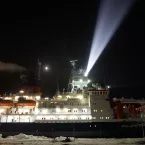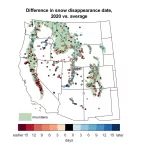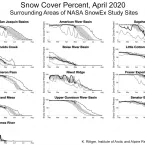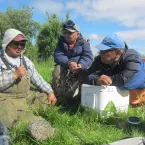Our Research
As climate changes, how do Earth's frozen areas affect our planet and impact society?
In this section
Related News & Stories
Filter by:

Feature Story
In September 2019, the research vessel Polarstern set off to drift with sea ice and study all aspects of the Arctic climate system for 13 months. NSIDC scientist Julienne Strove joined the international team of researchers on the coldest, darkest portion of the Multidisciplinary drifting Observatory for the Study of Arctic Climate (MOSAiC). This is how she prepared.

Analysis - Snow Today
Snow-covered area and snow cover days in the Western United States were below average in May 2020. The vast majority of snow monitoring sites in the Western United States no longer reported a snowpack by the end of the month.
Analysis - Sea Ice Today
The seasonal decline of Arctic sea ice extent proceeded at a near-average pace in May. Extent did not approach record lows but remained well below the 1981 to 2010 average.

Analysis - Snow Today
Snow-covered area and snow cover days were near average in April 2020. Snow-covered area continued to decline in April 2020 but was bolstered by storms in California in early April and in Colorado in late April.
Analysis - Sea Ice Today
The pace of sea ice decline in April was near average, while sea ice extent ranked fourth lowest in the satellite record.

ELOKA Spotlight
To protect knowledge of their land and culture, Yup’ik elders work with the Exchange of Local Observations and Knowledge of the Arctic (ELOKA), a NSIDC program, to immortalize their place names into an online atlas that continues to grow and evolve to this day.